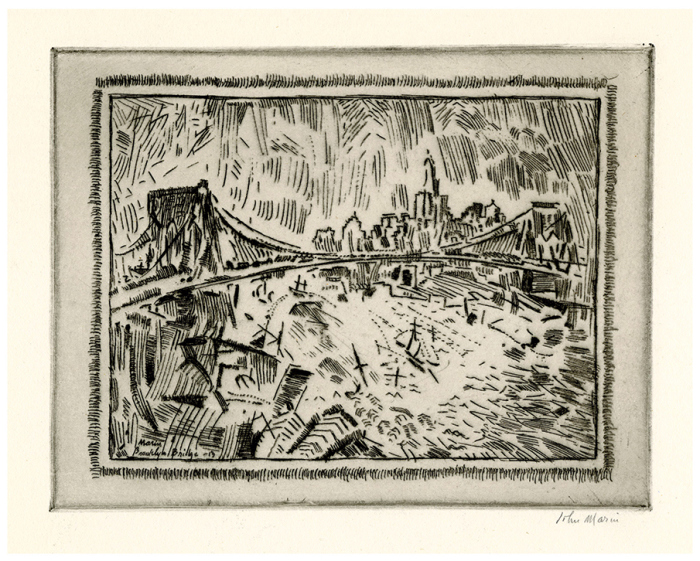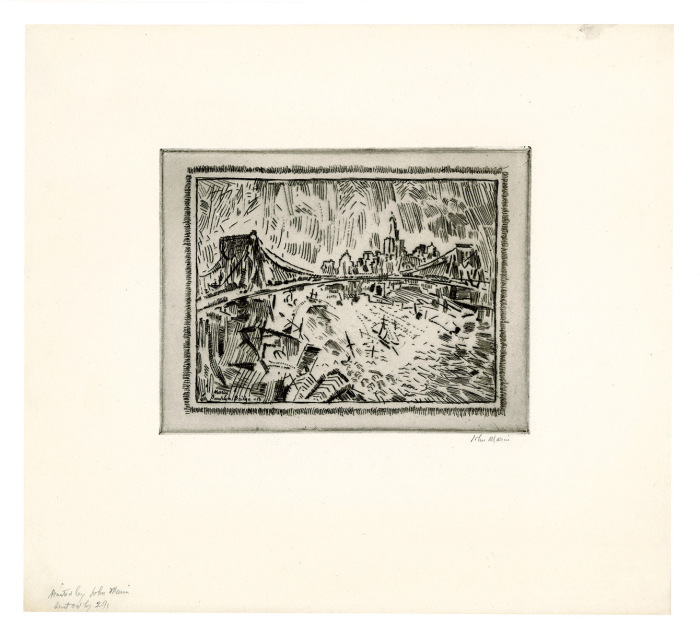Brooklyn Bridge and Lower New York
John Marin (1870-1953), Brooklyn Bridge and Lower New York, etching and drypoint, 1913, signed in pencil bottom right and inscribed in pencil by the artist “Printed by John Marin/sent out by 291” lower left margin. Reference: Zigrosser 106, second state (of two). Published by Alfred Steiglitz, 291 Fifth Avenue, New York. The full sheet, in very good condition, 6 7/8 x 8 7/8, the sheet 14 3/16 x 15 5/8 inches.
A very fine impression of this great rarity, printed with a veil of plate tone carefully wiped to lighten the center of the composition.
The composition was completed in the first state, known in only a few impressions; in the second state Marin added drypoint accents to the structures below the bridge, the boats in the river, the sky, and to the bridge as well.
Provenance:
Agnes and Eugene Meyer, Mount Kisco, NY; and then by descent to the family
Zigrosser called for an edition of 25 prints on Whatman paper plus a large edition after steel-facing on Van Gelder for the New Republic set in 1924. But he was mistaken in identifying this print as used in the New Republic set; Brooklyn Bridge Swaying No. 6 (Z 112) was initially used for that set but substituted after a few impressions by Downtown the El (Z 134). It is also not clear that the edition of 25 is accurate, for Zigrosser knew of only about a half dozen impressions, in major museums, and the print is virtually never seen on the market.
Brooklyn Bridge and Lower New York is among the earliest, if not the earliest, of the cubist-influenced prints Marin made after working for several years in a Whistlerian/realist idiom. When shown at Steiglitz’s 291 Gallery in 1913 Marin wrote some notes of explanation, including this statement: “I see great forces at work; great movements….In life all things come under the magnetic influence of other things; the bigger assert themselves strongly, the smaller ones not so much, but still they assert themselves, and though hidden they strive to be seen and in so doing change their bent and direction….While these powers are at work pushing, pulling, sideways, downwards, upwards, I can hear the sound of their strife and there is great music being played….And so I try to express graphically what a great city is doing.”
Marin’s modernist prints, done in the same year as the 1913 Armory Show, represent a new direction in American art.

